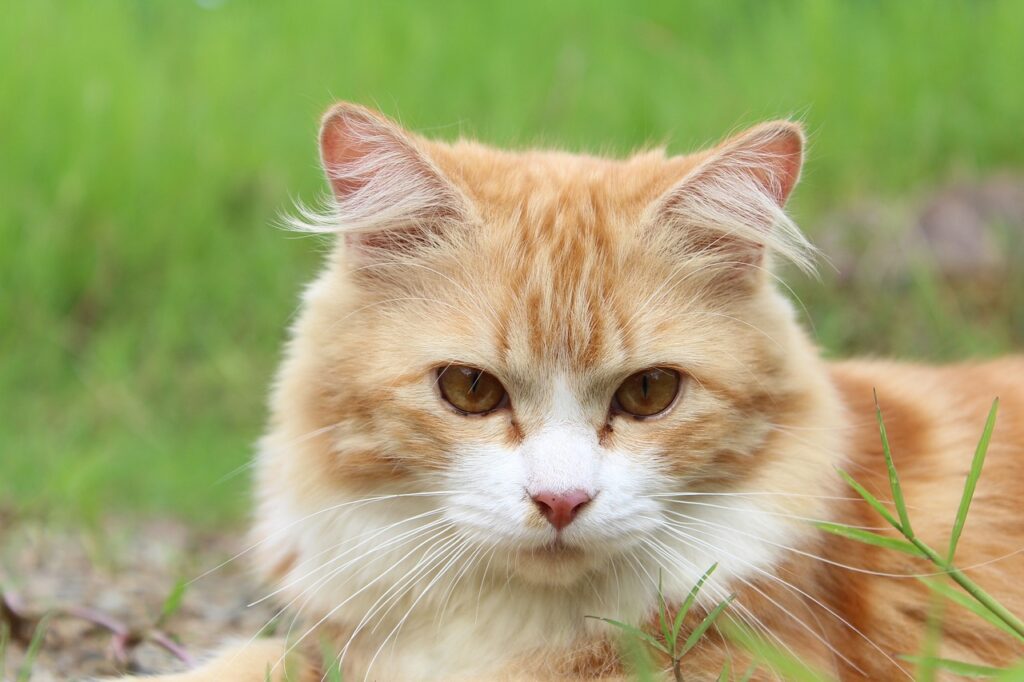Can Cats Eat Flies? – Yes, They can
Have you ever noticed your feline friend chasing something seemingly invisible, only to find out it’s a tiny fly? Well, the good news is, yes, cats can eat flies. In the wild, cats are natural hunters and often catch and consume various insects, including flies. Though flies are not harmful to cats, it’s important to ensure that these insects have not been in contact with toxic substances that could potentially endanger your pet’s health.
Can Kittens Eat Flies?
When it comes to kittens, the answer is also yes, but with more caution. Kittens are curious by nature and may attempt to catch and eat flies just like adult cats. However, their immune systems are still developing, and their smaller bodies are more susceptible to any potential toxins that flies may carry. It is crucial to monitor playtime and ensure a safe environment for your little ones.
Things to consider when feeding flies to kittens?
While kittens may find flies a tempting snack, consider their tendency to explore and put anything in their mouth. Keep an eye on their interactions with insects. Make sure your home is free from hazardous chemicals, and if using insecticides, always opt for pet-friendly alternatives. Additionally, monitor your kitten’s reaction to eating flies, as their digestive systems are more sensitive.
Nutritional Benefits of Flies for Cats – Why Flies are good for Cats?
Protein Content
Flies, like many insects, are a source of protein, which is an important component of a cat’s diet. Protein supports muscle development and overall health in felines.
Instinctual Fulfillment
Chasing and eating flies can also provide mental stimulation for cats, fulfilling their instinctual hunting urges, which is beneficial for their psychological well-being.
Natural Dietary Habit
In the wild, cats often eat a variety of insects; flies included. This is part of their natural dietary habits and can help keep indoor cats connected to their ancestral behaviors.
Hydration
Though flies are not a significant source of hydration, the act of hunting can encourage activity and, subsequently, drinking water, which is beneficial for a cat’s hydration.
Entertainment
Playing with and eating flies can be entertaining for cats, helping to keep them active and engaged, which is crucial for their overall health and happiness.
Potential Allergies: Can Cats Be Allergic to Flies?
It is uncommon for cats to be allergic to flies. However, an allergic reaction can still occur in very rare cases, especially if the cat has a specific sensitivity to the proteins found in insects.
Symptoms of Fly Allergies in Cats
- Scratching or Biting: If your cat starts scratching excessively after eating flies, it could be a sign of an allergic reaction.
- Swelling: Swelling around the face or lips could indicate an allergy to something they have ingested, such as flies.
- Gastrointestinal Upset: Symptoms like vomiting or diarrhea after consuming flies can signal a potential issue.
What to Do If Your Cat Shows Symptoms?
- Consult Your Vet: If you observe any worrying symptoms in your cat, consulting your vet is the best course of action.
- Observation: Keep a close watch on your cat’s behavior and physical conditions following a reaction.
- Prevent Further Access: If a reaction does occur, try to limit your cat’s access to flies and other insects.
Recommended Amount: How Much Flies Can a Cat Consume?
Even though flies are not harmful to cats, they should not be considered a staple in their diet. Cats should primarily eat a balanced diet appropriate for their age, breed, and health. Eating flies should be viewed as an occasional activity rather than a regular dietary practice.
Things to Consider When Feeding Flies to Cats
Consider the environment your cat is hunting in. If outdoors, be aware of the use of pesticides which could be harmful. While indoors, ensure cleanliness to reduce the risk of any diseases that flies may carry.
How to Feed Flies to Cats: A Quick Guide
Cats typically don’t need a guide to catch flies – it’s in their nature. However, creating a safe hunting space is fundamental. Provide your cat with areas where they can pounce and leap without danger, perhaps by playing with toys that imitate the flying and erratic movement of insects.
Interactive Play Session
Engage in interactive play with toys that mimic the movement of flies to provide a controlled and safe environment for your cat’s hunting instincts.
Natural Habitat Simulation
Setting up a cat-friendly space with elements like cat trees and perches can encourage natural behaviors such as jumping and pouncing, akin to fly catching.
Supervised Outdoor Time
If possible, supervised outdoor time in a safe, enclosed area can also provide natural opportunities for your cat to chase insects like flies.
Conclusion
Eating flies is generally safe for cats and can offer some benefits, such as protein intake and satisfying their hunting instincts. However, it’s crucial to maintain a controlled environment free from toxic substances, and to keep an eye out for any unusual reactions, especially in kittens. Always prioritize a complete and balanced diet over occasional insect snacks to keep your feline friend healthy and happy.



